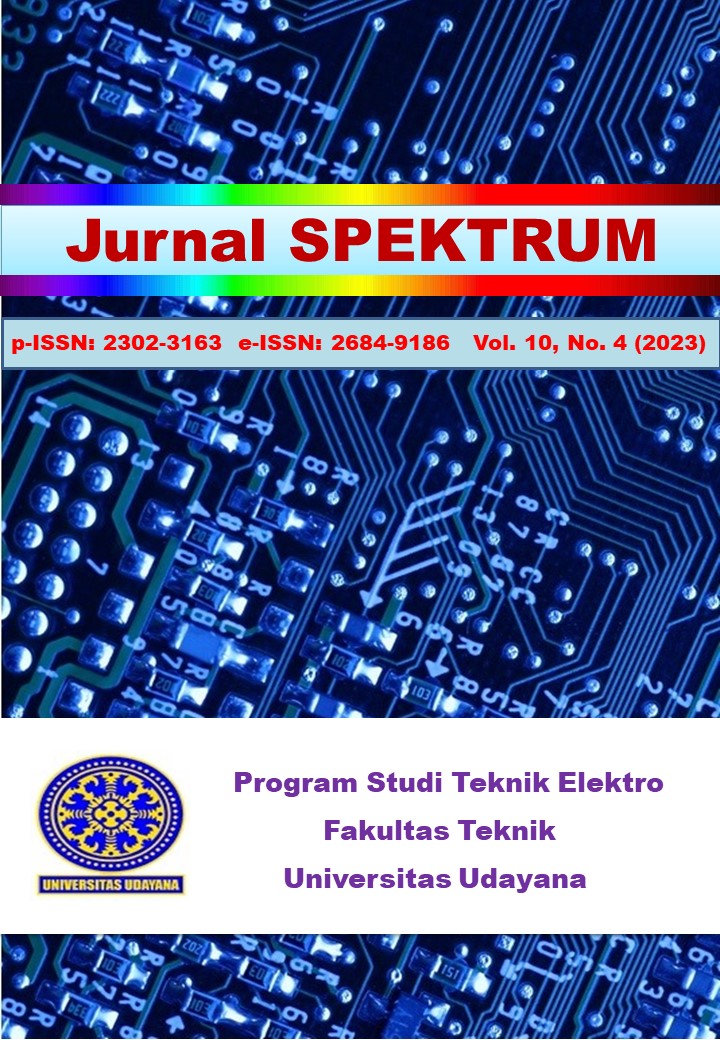SOLUSI ALTERNATIF PENYAMPAIAN INFORMASI DENGAN TOLERANSI WAKTU TUNDA UNTUK PENGGUNA LAYANAN KOMUNIKASI DATA PADA PEDESTRIAN NETWORK
Abstract
This research aims to evaluate the performance of routing patterns in opportunistic networks for transmitting time-tolerant information, such as product prices and store coordinates in the Kuta, Badung area by using pedestrians as intermediaries and recipients of information. Two basic routing patterns, epidemic and spray and wait, are simulated using The ONE Simulator into two scenarios including a scenario of increasing average pedestrian density and a scenario of increasing buffer size. The simulation results show that in the scenario of increasing the average pedestrian density, the epidemic routing has a higher delivery probability and lower average latency than the spray and wait routing, but the spray and wait routing has a lower overhead ratio value. In the scenario of increasing buffer size, the spray and wait routing has a higher delivery probability and lower average latency at smaller buffer sizes. Meanwhile, the epidemic routing pattern produces a higher delivery probability and lower average latency at a larger buffer size, although with a difference that is not too significant.
Downloads

This work is licensed under a Creative Commons Attribution 4.0 International License.



